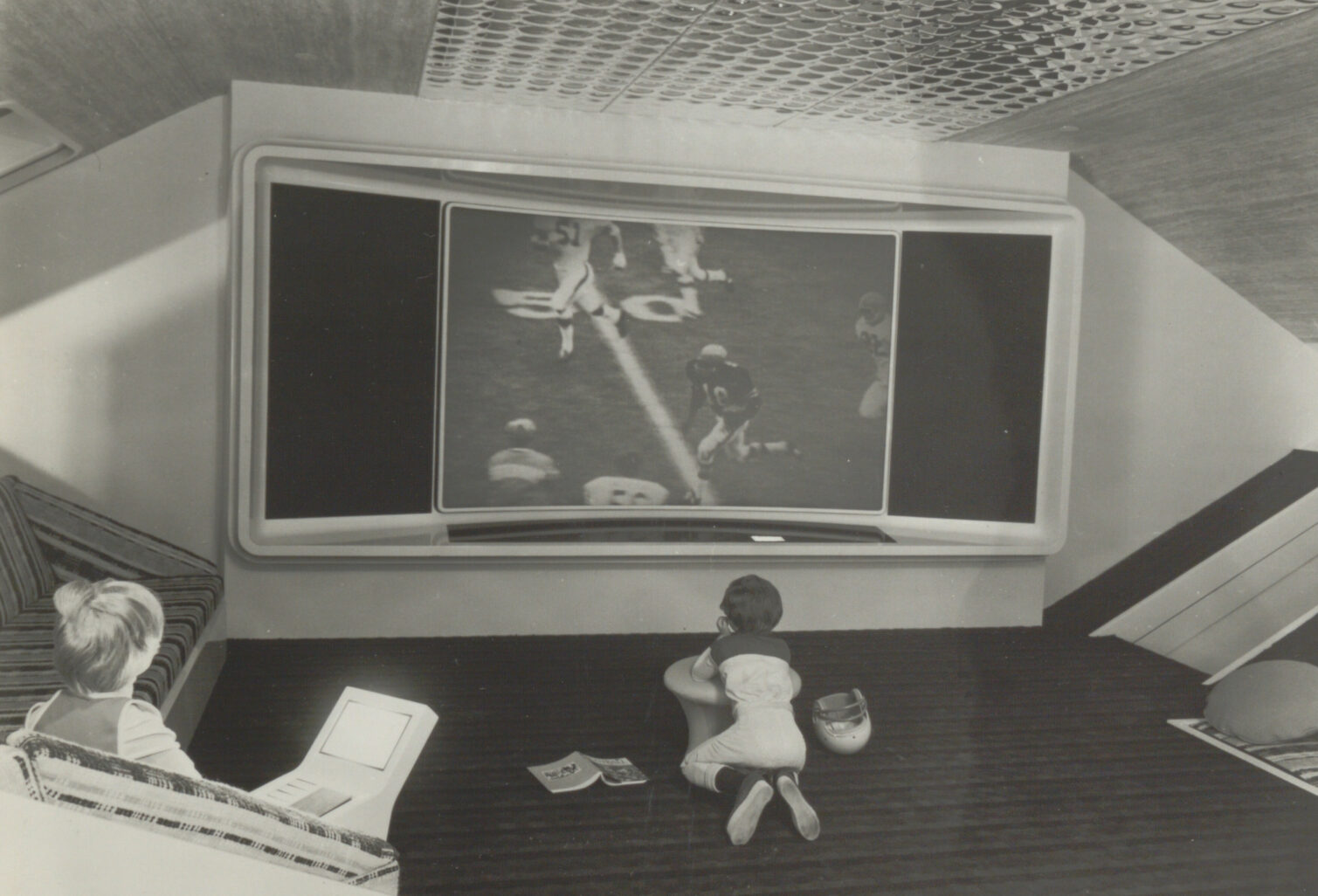Envisioning “The Fabulous Future” of mass communications through David Sarnoff’s speeches
David Sarnoff, President (and later CEO) of the Radio Corporation of America (RCA), 1930-1965, was a prolific public speaker. From addressing government committees, electronics societies and university students, to accepting honorary degrees or attending gala dinners, he was regularly provided with, and sought out, opportunities to share his visions for the broadcasting industry.
The records of five decades' worth of speeches and articles survive in the David Sarnoff Papers held at Hagley Museum and Library, and have been digitised as part of AM’s product, Broadcasting America: The Rise of Mass Media and Communications. These speeches provide researchers with a detailed source for understanding both the history of twentieth-century technology and mass communications, and Sarnoff's influence on these fields.

David Sarnoff holds a mock-up of a pocket-size color TV set with combination AM-FM radio, 1961. Content compilation © 2023, by the Hagley Museum & Library. All rights reserved.
Many of Sarnoff's speeches have titles such as Looking Ahead and The Fabulous Future, demonstrating his constant search for the next business opportunity and application of developing technology. Sarnoff's ability to predict future technical developments is at times uncanny. Early conceptions of appliances which are today taken for granted, such as television and wearable electronics, can be traced back to the 1920s in speeches such as Joining Sight to Sound in Radio and Radio, Its Commercial and Social Influence. In the latter, Sarnoff introduced the concept of radio for the individual, stating that ‘soon it should be possible to design a small pocket radio set, or a set even in wrist-watch form’. Elsewhere in the collection, Sarnoff’s correspondence with Dr Alfred Goldsmith, director of RCA’s Research Department, reveals his ideas for wearable technology that foreshadow today’s smart watch. Calling it the “Radiolette”, Sarnoff presented his suggestions for miniaturising existing radio technology into a wristwatch, ensuring it was multi-functional and beautiful, ‘for people do not like to carry things about their person which do not look beautiful’.
By the 1960s, Sarnoff was speaking increasingly regularly on the potential promises and challenges of computers and worldwide communication networks. In a 1964 speech, Sarnoff forecasted how computer technology would develop to 'recognize a voice, a face or a symbol … they will have the power to learn through experience' and that 'a global link-up of computers will be accomplished through communication satellites'. In a 1965 speech, he predicted that ‘today’s console and table model furniture may be displaced by an all-purpose television screen, mounted on the wall … This means that the major channel of news, information and entertainment to the home will be a single integrated system’. Sarnoff was envisioning the development of smart TVs, forty years before they would reach the general consumer market.

Home entertainment center of the future, c.1970s. Content compilation © 2023, by the Hagley Museum & Library. All rights reserved.
Explore hundreds of David Sarnoff’s speeches and articles, alongside a wide range of other papers relating to twentieth-century American broadcasting, in Broadcasting America: The Rise of Mass Media and Communications which is out now.
About the author
Sophie Heath is a Senior Editor at AM.
About the collection
Broadcasting America: The Rise of Mass Media and Communications is out now. The two volumes of speeches quoted in this blog, Addresses, Press Releases, and Articles, Volume II (1922-1924) and Addresses by David Sarnoff, Volume XI (1964-1966), are available open access for 30 days.
Recent posts

The blog highlights American Committee on Africa, module II's rich documentation of anti-apartheid activism, focusing on the National Peace Accord, global solidarity, and student-led divestment campaigns. It explores the pivotal role of universities, protests, and public education in pressuring institutions to divest from apartheid, shaping global attitudes toward social justice and reform.

This blog examines how primary sources can be used to trace the impact of young voices on society, particularly during pivotal voting reforms in the UK and the US. Explore materials that reveal insights into youth activism, intergenerational gaps, and societal perceptions, highlighting their interdisciplinary value for studying youth culture, activism, and girlhood across history.
